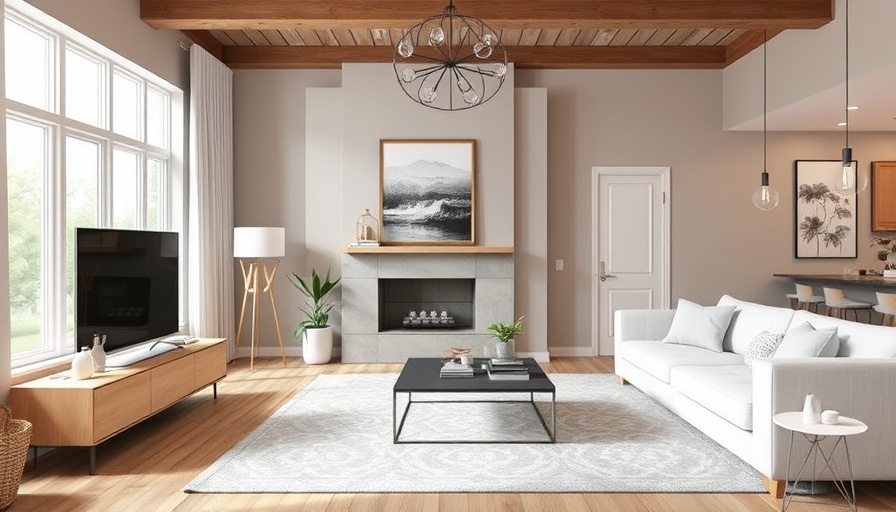
The Modern Advantage of Virtual Staging
In an ever-evolving real estate landscape, sellers are increasingly turning to innovative methods to make their properties stand out. Virtual staging has emerged as a game changer. Unlike traditional staging that requires hefty budgets for furniture rentals and physical arrangements, virtual staging involves digitally enhancing photos of empty rooms. This allows potential buyers to visualize living in a space without the clutter and cost of physical items.
Why Virtual Staging is a Smart Investment
As interest rates fluctuate and the real estate market remains competitive, sellers must leverage every asset at their disposal. Notably, virtual staging costs typically range from $39 to $199 per room, a fraction of what traditional staging can demand. This approach helps sellers save significant sums that can instead be invested in renovations or other marketing strategies.
Emotional Impact: Selling Subtly
The emotional connection that buyers develop with a home often begins with the imagery presented online. Young Kim from Bella Staging succinctly touches on this point, likening home selling to modern dating practices. Just as one would not post a blank profile picture online, an empty room does little to entice potential buyers. Virtually staged homes are more likely to leave a lasting impression, drawing in interested parties for showings. This emotional engagement often translates into quicker sales and potentially higher offers, enhancing both seller and buyer experiences.
How It Works: The Digital Process
Virtual staging incorporates advanced software to render realistic, appealing images of spaces. Designers can add furniture like chic sofas, elegant dining sets, and tasteful decor—all customized to fit the target buyer's lifestyle. This method not only showcases the property’s potential but highlights its best features, making any room feel inviting and move-in ready.
Ideal Situations for Virtual Staging
Vacant homes are prime candidates for virtual staging. They often come off as cold and uninviting, making it hard for buyers to envision themselves there. Similarly, homes with outdated decor can benefit, as virtual staging provides a fresh new look without the hassle and expense of physical alterations. By presenting properties in their best light, sellers manage to enhance their appeal significantly among homes for sale listings.
Enhanced Marketing: Reaching Wider Audiences
A crucial benefit of virtual staging lies in its marketing potential. Stunning visuals attract more eyes resulting in increased traffic to online listings on platforms like Redfin, Zillow, and Trulia, leading to greater interest from serious buyers. As prospective home seekers perform their house hunting predominantly online, quality visuals play a vital role in making a favorable first impression.
Future Trends in Real Estate Marketing
The rise of virtual staging signals future trends in real estate marketing, illustrating a shift towards tech-driven solutions that cater to changing consumer expectations. As buyers become more discerning and visually-oriented, we can expect technologies to enhance not just visuals but also experiences, such as virtual reality tours and augmented reality capabilities that allow potential buyers to visualize their future homes.
Conclusion: Embrace Modern Staging Solutions
As the real estate landscape continues to evolve, embracing modern solutions like virtual staging can profoundly impact how properties are marketed and sold. For real estate agents and sellers alike, understanding the nuances of virtual staging can lead to smarter, more effective strategies in attracting buyers. With the ability to save money and engage emotions, virtual staging is not just a trend but a vital component in a real estate toolkit.
As you consider selling your home or advancing in your real estate career, explore how virtual staging can elevate your strategy. With compelling visuals and affordability, it's time to adapt to modern staging methods in today's competitive market.
 Add Row
Add Row  Add
Add 




Write A Comment